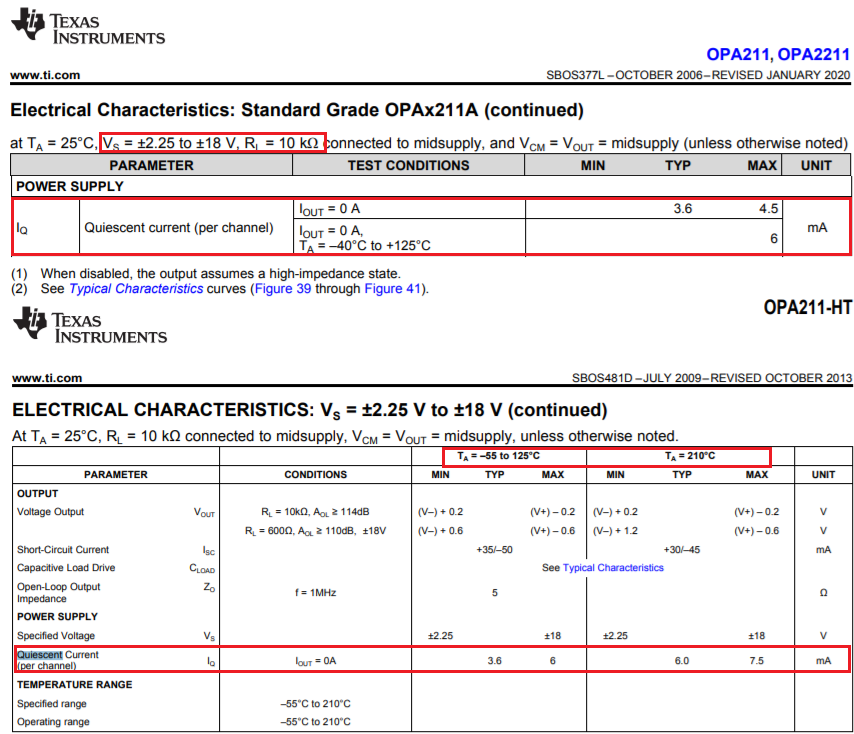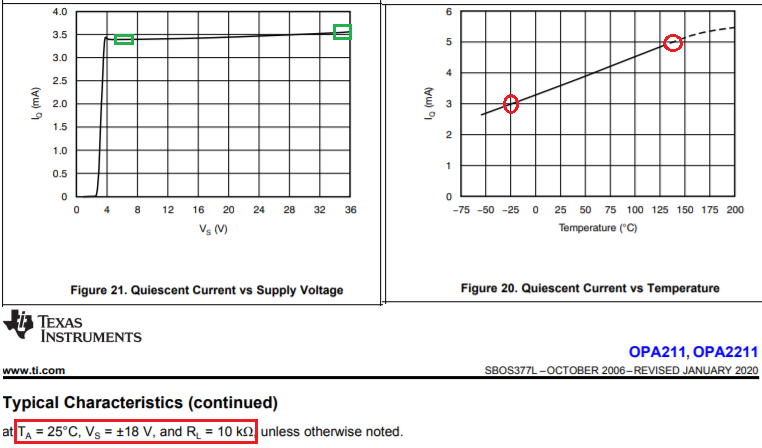Hi Team,
The datasheet provides information on the maximum quiescent current over the whole supply range pf OPA211. A customer would like to know if the device is powered from ±2.3V, what is the worst case it could draw current from the operating temperature range of -55C to 150C?
Regards,
Danilo



